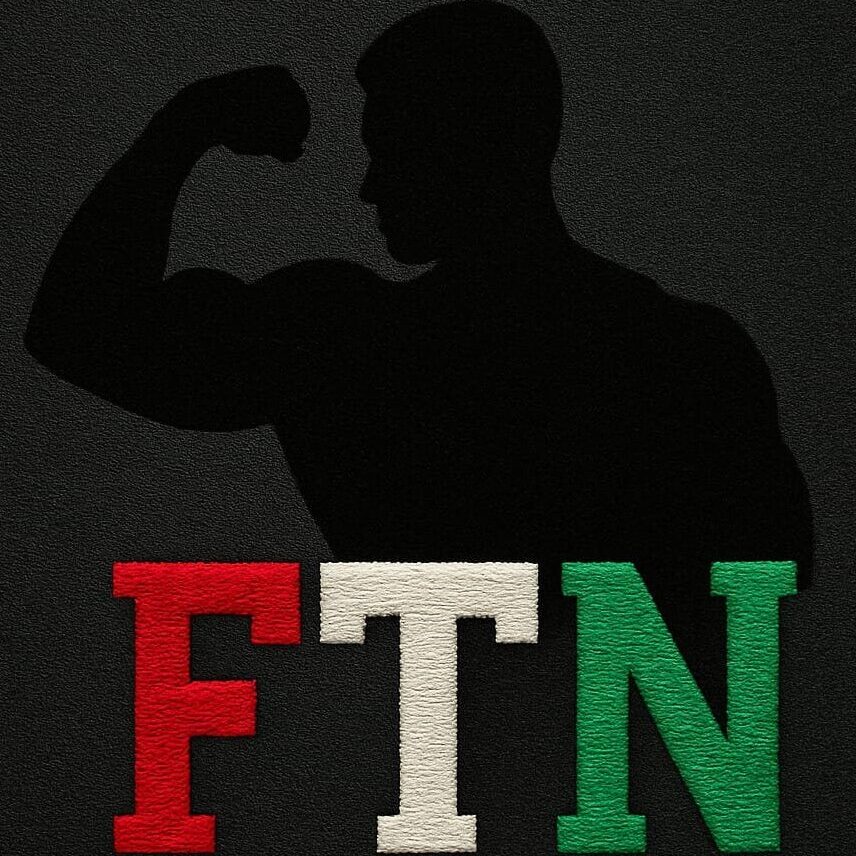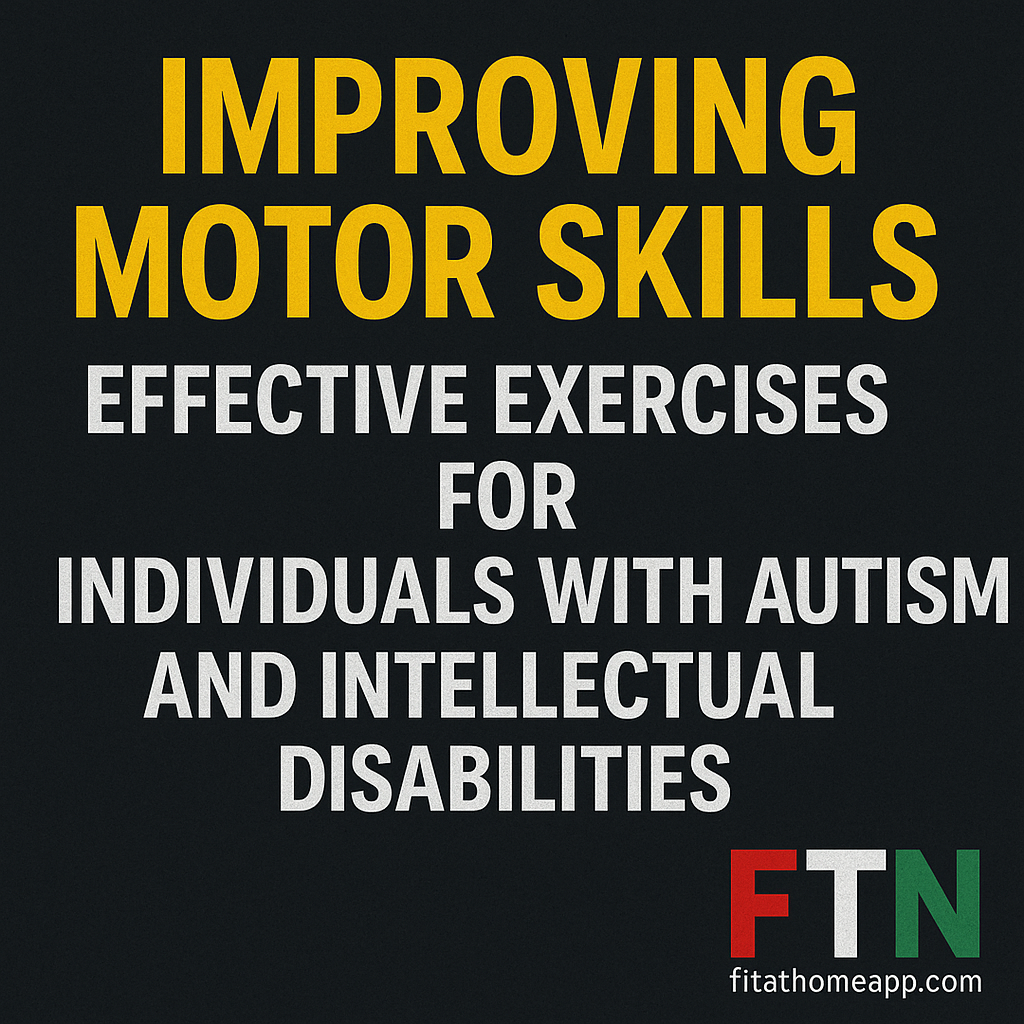The Importance of Motor Skills for Individuals with Autism and Intellectual Disabilities: A Guide for Care and Development
Motor skills are foundational abilities that allow us to move, interact with our environment, and carry out everyday tasks. These skills are typically divided into two categories: gross motor skills and fine motor skills. Gross motor skills involve large muscle groups and include actions like walking, jumping, and running. Fine motor skills, on the other hand, focus on smaller movements, such as gripping a pencil, fastening buttons, or turning pages in a book.
While developing these skills is essential for everyone, they are particularly important for individuals with autism spectrum disorder (ASD) and intellectual disabilities (ID). Many people with these conditions experience challenges with motor skill development, which can affect their independence, confidence, and ability to engage with the world around them.
Understanding Autism, Intellectual Disabilities, and Motor Development
Autism is a complex neurodevelopmental disorder that affects how a person communicates, behaves, and interacts with others. Intellectual disabilities refer to below-average intellectual functioning and limitations in adaptive behavior, which includes conceptual, social, and practical skills.
Motor skill difficulties are common in both groups. Children and adults with autism or ID may struggle with tasks like balancing, catching a ball, or using utensils. These challenges can stem from differences in muscle tone, coordination, sensory processing, or cognitive function.
Importantly, delays or difficulties in motor skills don’t only impact physical ability—they can influence a person’s self-esteem, social life, and even academic performance. That’s why targeted motor skill exercises are essential for promoting development and well-being.
Why Motor Skill Exercises Matter
Incorporating regular motor skill activities into daily life offers numerous benefits, especially for individuals with autism or intellectual disabilities. These include:
Improved coordination and movement control 🏃♂️
Exercises help build smoother, more efficient movement patterns, making daily tasks like walking, climbing stairs, or picking up objects easier.Increased muscle strength and endurance 💪
Many individuals with developmental challenges also experience low muscle tone or weakness. Motor exercises can gradually build strength and stamina.Boosted self-confidence and motivation 🌟
Reaching new physical milestones—even small ones—can build confidence and encourage individuals to take on new challenges.Enhanced social interaction 🤝
Participating in group-based activities or games helps individuals develop communication skills, teamwork, and emotional regulation.Better independence and life skills 🧩
Motor improvements support daily tasks like dressing, eating, and hygiene, helping individuals gain more autonomy in their routines.
Types of Motor Skills and Exercises
1. Gross Motor Skill Activities
These involve larger movements and help improve balance, posture, and whole-body coordination. Some effective gross motor exercises include:
Jumping on trampolines or over lines taped on the floor.
Obstacle courses, which involve crawling, climbing, and balancing.
Dancing, which develops rhythm, coordination, and body awareness.
Running games, such as relay races or tag.
Climbing, whether on playground equipment or indoor setups with soft padding.
These activities can be adapted to fit the individual’s ability level. The key is to make them fun, engaging, and safe while encouraging consistent practice.
2. Fine Motor Skill Activities
Fine motor exercises support precise hand and finger control. These are essential for tasks like writing, using tools, or tying shoelaces. Effective activities include:
Drawing and coloring with crayons or markers 🖍️
Helps improve grip, hand control, and creativity.Threading beads or buttons through strings
Enhances hand-eye coordination and focus.Using child-safe scissors to cut out shapes
Builds finger strength and bilateral coordination.Playing with building blocks or puzzles 🧱
Improves spatial awareness and problem-solving.
It’s important to adjust the materials to suit sensory preferences and motor skill levels—for example, using larger beads for beginners or adding textured materials for sensory input.
Making Motor Skill Practice Part of Daily Life
Motor skill development doesn’t need to feel like therapy or a chore. The most effective programs are those that blend learning with play, routine, and creativity. Here’s how you can integrate exercises into daily routines:
During playtime: Introduce games like hopscotch, Simon Says, or scavenger hunts.
In the kitchen: Stirring, kneading dough, or setting the table involves both gross and fine motor skills.
Helping with chores: Folding clothes, sweeping, or organizing toys can become valuable skill-building moments.
Use visual schedules: For individuals with autism, structured routines and visual cues can help reduce anxiety and improve engagement in activities.
Remember: Consistency is key. Even a few minutes of practice each day can lead to meaningful progress over time.
Working with Professionals and Resources
Occupational therapists (OTs), physical therapists (PTs), and special education professionals are key allies in motor skill development. They can create individualized plans that target the specific needs of each person and ensure that exercises are both safe and effective.
Caregivers, teachers, and families can also access online resources, such as video demonstrations, printable activity sheets, and community forums to share ideas and find new exercises. Many community centers also offer inclusive physical activity programs for children and adults with disabilities.
Final Thoughts and Encouragement
Motor skills are more than just physical abilities—they are stepping stones to greater independence, emotional growth, and social inclusion. By focusing on both gross and fine motor development, we can open doors to a richer, more fulfilling life for individuals with autism and intellectual disabilities.
Caregivers, educators, and therapists play a pivotal role in fostering this growth. With patience, encouragement, and creativity, motor skills exercises can become enjoyable daily habits that bring real results.
Whether you’re a parent helping your child thread beads or a teacher leading an obstacle course in class, your support can make a lasting difference. Start small, celebrate progress, and keep going—because every movement forward counts.
My Personal Review of the Video
This video provides a helpful and structured introduction to improving fine motor skills in children with autism. It effectively emphasizes the importance of early intervention and offers clear demonstrations using everyday tools like scissors, crayons, and small objects.
The narrator’s tone is calm and informative, which makes the video accessible to both parents and educators. It also avoids overwhelming the viewer with too many techniques at once, instead focusing on a few foundational strategies.
However, while the video succeeds in delivering practical examples, it lacks some engagement elements that could make it more dynamic and easier to follow for visual learners

